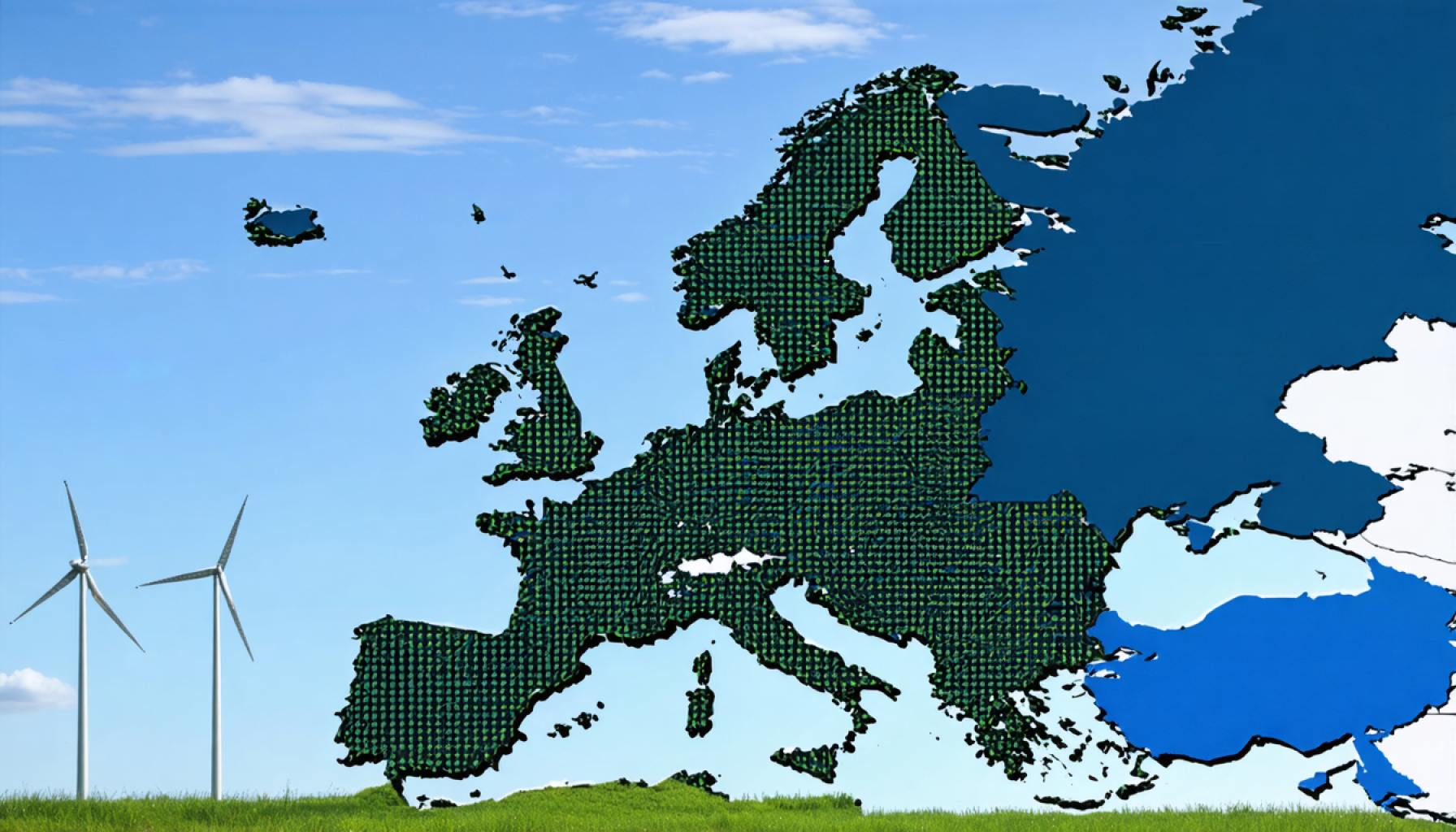- The Caspian-Black Sea-European Green Energy Corridor meeting between Azerbaijan and Romania aims to reshape Europe’s energy landscape.
- The project is a response to climate change and geopolitical challenges, focusing on sustainable energy from the Caspian to Europe.
- Europe aims to diversify energy sources, enhancing security and reducing reliance on volatile suppliers.
- Discussions included gas supply, serving as a transitional bridge to renewable energy.
- The initiative emphasizes cooperation for a resilient, self-sufficient Europe, underpinning economic harmony and empowerment.
- The project’s development represents a potential breakthrough, demonstrating the power of collaboration in overcoming global challenges.
Beneath the vibrant pulse of Istanbul, against its historic tapestry of domes and minarets, a hushed yet powerful dialogue unfolded—a meeting that could reshape Europe’s energy landscape. Azerbaijan’s Energy Minister, Parviz Shahbazov, and Romania’s energetic Sebastian-Ioan Burduja convened to orchestrate a strategic ballet across continents. The conversation swirled around an ambitious vision—the Caspian-Black Sea-European Green Energy Corridor.
This initiative isn’t merely about energy; it embodies a proactive response to a warming planet and a geopolitical chess game. Imagining a corridor that channels power from the sun-drenched Caspian shores to the bustling urban centers of Europe, it envisions a new dawn of sustainable connectivity. The stakes are high, and the benefits—immense. By diversifying energy sources, Europe weaves a tapestry of security and innovation, reducing dependence on volatile suppliers while lighting the path to its green future.
The rhythm of the meeting was punctuated by discussions on gas supply—a pragmatic bridge as Europe transitions from fossil fuel reliance to renewable vitality. With a keen eye on both the present and future, the dialogue set the stage for a nuanced partnership.
Yet, this conversation whispered of more than agreements; it spoke to a mutual desire for transformation, a shared journey towards a resilient, self-sufficient Europe—harmonizing economies and empowering nations. In their accord lies a blueprint for a greener continent and a profound takeaway: Cooperation is the linchpin of progress. The corridor’s development is not merely an energy project but a beacon of possibility, illustrating that by joining forces, even the most daunting challenges can be surmounted.
This meeting invites the world to imagine a future where energy knows no borders, innovation is limitless, and unity is the power source that propels us into an enlightened, sustainable age.
Europe’s Bold Green Energy Vision: A New Dawn or Just a Dream?
How the Caspian-Black Sea-European Energy Corridor Could Transform the Continent
Understanding the Corridor’s Vision
The Caspian-Black Sea-European Green Energy Corridor represents a strategic energy alliance between Azerbaijan and Romania, aiming to notably reshape Europe’s energy landscape. This initiative is designed to weave sustainability into the continent’s energy strategy and cut down on dependency on traditional energy sources.
Here’s What You Need to Know
1. The Strategic Importance
– Geopolitical Influence: This corridor is poised to reduce Europe’s reliance on more volatile energy suppliers. By establishing a stable and consistent energy flow from Azerbaijan to Europe through Romania, the partnership stands to minimize geopolitical risks involved with energy procurement.
– Sustainability Goals: Aligning with Europe’s Green Deal, this corridor aims to significantly lower carbon emissions and bolster renewable energy usage. This is integral as Europe pushes towards achieving climate neutrality by 2050 (European Environment Agency).
2. Potential Benefits and Challenges
– Pros:
– Energy Security: Diversifies energy sources and mitigates risks associated with energy supply disruptions.
– Economic Growth: Boosts infrastructure investment, potentially creating jobs and fostering economic growth in participating regions.
– Renewable Energy: Accelerates Europe’s transition from fossil fuels to renewables, aligning with global sustainability trends.
– Cons:
– Financial Cost: Huge initial investments are required to establish infrastructure, which can pose economic challenges.
– Technological Hurdles: Developing such an interconnected corridor requires advanced technology and cooperation among countries, which can sometimes be challenging logistically and politically.
3. Real-World Applications
Countries like Germany, already leading in renewable energy adoption, can set an example on how investments in green corridors can transition into sustainable economies (Federal Ministry for Economic Affairs and Energy, Germany).
4. Industry Trends and Predictions
– Market Forecasts: As the EU targets 40% of energy consumption from renewables by 2030 (European Commission), this corridor can play a key role in meeting these demands while fostering technological innovations.
5. How to Stay Ahead in the Energy Sector
– Adopt Renewable Technologies: Embrace solar, wind, and other renewables in business and personal use to align with future energy trends.
– Invest in Energy Efficiency: Leveraging energy-efficient appliances and technologies can reduce costs and environmental impact.
Final Recommendations
To play a role in this transformative journey:
– Businesses should explore collaboration opportunities with European partners.
– Governments can facilitate dialogues that encourage international cooperation in green energy projects.
– Individuals can support policies and products that prioritize sustainability.
Explore More
Discover more insights about the European energy landscape and sustainable practices by visiting the European Union’s official website. Stay informed on the latest energy policies and green initiatives shaping the future of Europe.
By implementing these strategies, the Caspian-Black Sea-European Green Energy Corridor could become a cornerstone of Europe’s sustainable future, setting a precedent for global energy cooperation.
